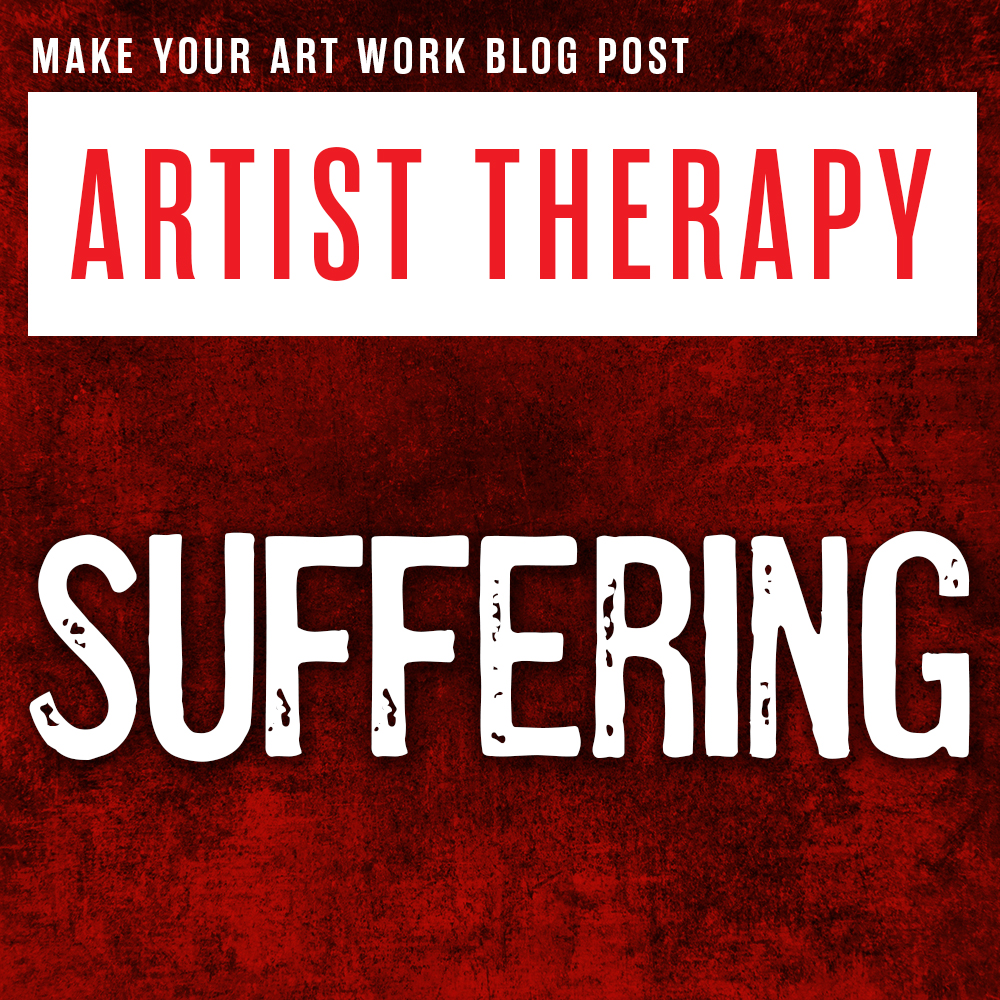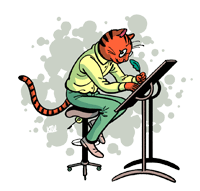
Artist Therapy Posts: Where we face the feels all artists struggle with.
I want to tackle a myth today. A really pervasive one that I think locks a lot of artists into justifying unhealthy behavior. The myth of the tortured artist. The belief that you have to suffer for your art. That you have to be a martyr to make good work. That art is only good if it comes from pain. I think we’ve got it backwards. The cart is before the horse, and it’s holding a lot of artists back from embracing (and enjoying) their creativity.
The icons of artistic suffering are so pervasive in the history of art and literature. Van Gogh cutting off his ear. Jackson Pollock’s alcoholism and depression. Toulouse-Lautrec’s struggles with his physical deformities. Keats using his last gasping breaths to write poetry as he succumbed to tuberculosis. Kurt Cobain’s drug addiction and suicide. Beethoven’s madness. Munch. Goya. Plath. Gauguin. Michelangelo. Rimbaud. It seems like tragedy and mental illness and art go hand in hand. It feels like to make great art, it must be born of suffering and pain. And I think artists not only excuse pain and mental health issues as the price of making art — I think the art world even encourages it. A wild and out of control artist makes for a more interesting story, after all.
Well, I think we’ve got the chicken and the egg confused. I don’t think suffering and pain and starvation make great art. I think great artists make great art despite the pain and suffering and mental illness. There have been multiple studies that have found mental illness is statistically more common in artists/creative people, and even that people with schizophrenia in the family are more likely to become creative professionals. (Spoiler, I have schizophrenia in my family so I find that study especially fascinating.) I found these studies incredibly interesting because I believe most artists first become artists as a form of self-therapy. I think that there’s a higher percentage of mental illness in artists because people who are born with mental illness are more likely to become artists. I think it begins as a coping mechanism. It starts as a kid, as a way of making sense of the world. If you read Otto Rank and Elaine Aron, they believe it starts as a way for highly sensitive people to process the excess sensory and emotional stimuli. Then the art gets praised as a child, they take on the identity of “the artistic one” and that gets embedded deeper in the identity. Maybe creating successfully keeps them on the functioning side of mental health. Maybe it doesn’t, and then you have the infamous tortured artists I mention above. Regardless I think the long-held belief or suspicion that becoming an artist makes one crazy is backward. I think creating makes you less crazy. (That’s a whole post in itself, so stay tuned.)
Now, let me pause a minute and say there’s a difference between suffering and sacrifice. You will have to sacrifice and put in time and hard work to have a successful art career (or success in anything, really). Sacrifice can also be painful — ask anyone who’s been home fighting to practice their technique while wracked with a bad case of FOMO every time they look on Facebook. But suffering and sacrifice are not the same. You shouldn’t be looking to encourage pain, or think it legitimizes your art.
The myth of the starving and tortured artist has become so embedded in our cultural consciousness (thanks, super-emo Romantic Era poets) that many artists cultivate suffering because we’re convinced it makes our art better. More authentic. More romantic. Well, happiness researchers like Shawn Achor have disproven the myth. He has found that across the board artists are more creative when they’re happy and optimistic. So stop reveling in your pain, convinced it will make better art. Don’t adopt the bad boy (or girl) personas we see way too often in the art world. Bad behavior and untreated mental illness does not make your art, nor is it forgiven by your art. You may have started making art as a coping mechanism, but that does not mean if you find other ways of dealing with (and even healing) the source of the pain that it will take your drive to make art away. Your art will not lose some ineffable quality of authenticity.
Face your demons, and find ways to build a stronger, healthier mental state. Yes, your art may change. But it will change for the better, and so will you.





I loved this article and I think it was important. Bipolar runs in my family, and I suffer from it and other things and I find that creating “helps” me, it does not make me worse by any means. It is a wonderful therapy for me. It helps me in ways medications can not. Drawing has helped me throughout my whole life. I have also gotten a lot of ideas from my suffering. I’m not trying to sit here and say I’m a tortured artist by any means. My main point is that it helps me and the two can definitely go hand in hand. Thanks for writing this! I think this is an important discussion to have. ❤️???
brilliant. was watching an Amy Winehouse Interview (R.I.P.), Googled the phrase, Suffer for your art and came across this. Keep up the great work. 07/23/2019